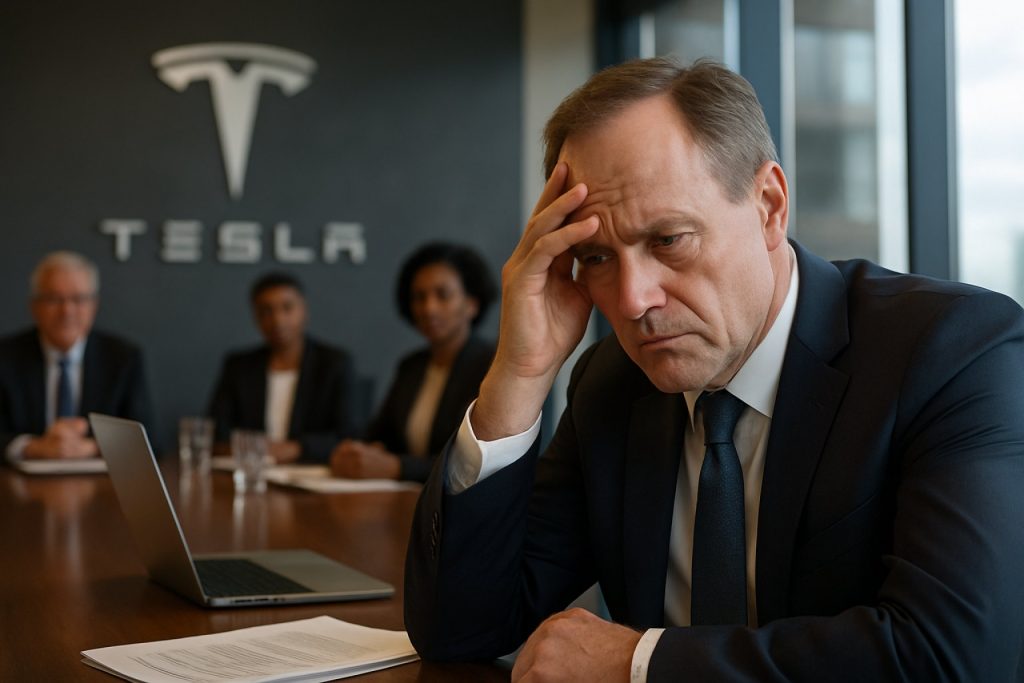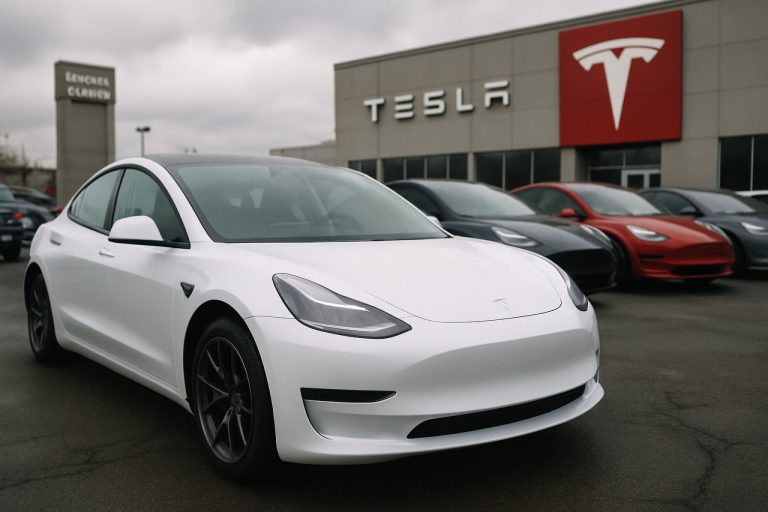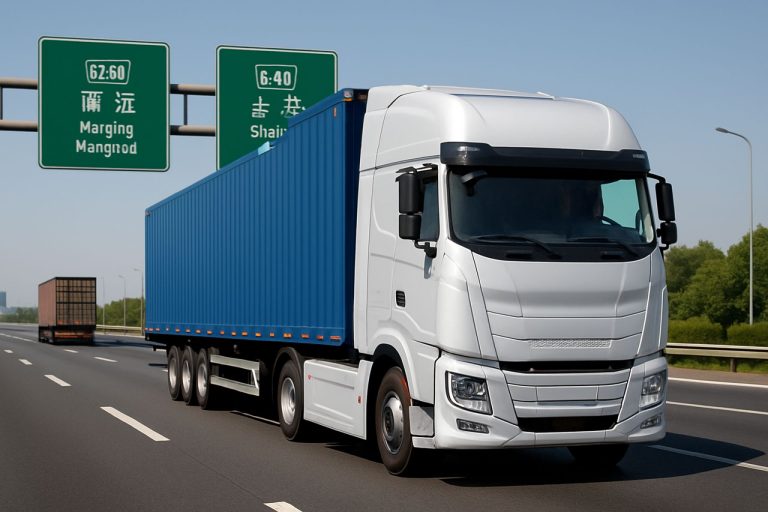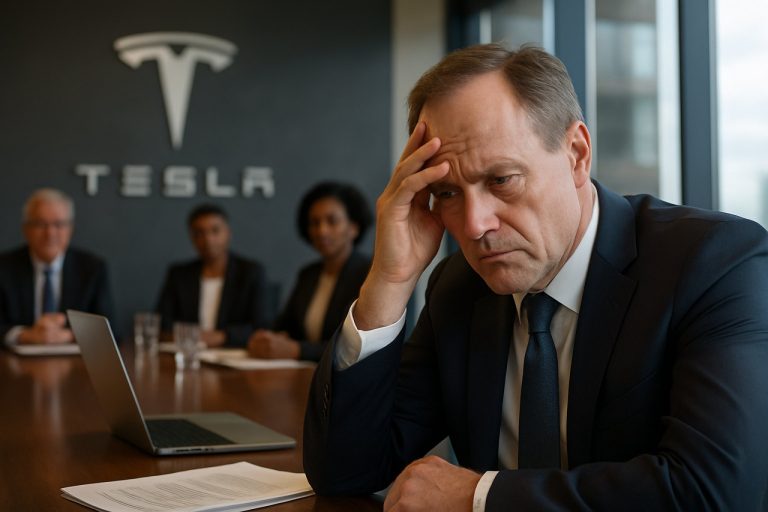
- Tesla faces mounting challenges, including declining electric vehicle sales, sharp drops in European market share, and a significant fall in public perception rankings.
- Major institutional investors are pressuring Tesla’s board to demand greater dedication from CEO Elon Musk amid concerns over absentee leadership and divided focus.
- Musk’s controversial actions and public statements have intensified scrutiny, impacting Tesla’s brand value and raising governance concerns.
- A Delaware court overturned Musk’s $56 billion pay package, spotlighting issues of board independence and shareholder rights.
- Investors call for increased accountability, stable leadership, and a full-time CEO commitment as Tesla navigates technological disruption and fierce global competition.
Silicon Valley was built on dreams as big as its flagship companies, but even its brightest stars aren’t immune to gravity. Now, as clouds gather over the once-unstoppable Tesla, a high-stakes standoff unfolds between its restless CEO and the gatekeepers of long-term prosperity.
Challenging the Myth of Unstoppable Innovation
Tesla, famed for sparking a worldwide electric vehicle revolution, now finds itself at a crossroads where innovation meets instability. A powerful coalition of institutional investors—guardians of pension funds and millions of workers’ savings—has called on the company’s board to demand more from its mercurial leader, Elon Musk. Their message is simple: the era of the absentee CEO must end.
Signs of Strain Multiply
Once an icon of relentless momentum, Tesla now contends with declining sales, sharp falls in European market share, and a slide in its public image. The numbers paint an unsettling portrait: EV sales dipped year-over-year in the first quarter, while the company’s legendary run atop public favor crashed in the Axios Harris Poll rankings. Once sitting comfortably in the top ten, Tesla has now plummeted to 95th in public perception, lagging behind all but a handful of US corporate giants.
On Wall Street, the honeymoon has cooled. Tesla’s shares have dropped 12% in 2024, against the tech-heavy Nasdaq’s mere 1% dip—a troubling contrast for investors seeking future growth.
Leadership Under Fire
Boardroom drama rarely spills into public view with such intensity. Investors controlling nearly eight million shares have demanded that the board set a clear standard: Elon Musk should commit at least 40 hours each week to Tesla—a commitment that feels almost quaint amid his high-profile projects at SpaceX, AI ventures, and increasingly political pursuits. Detractors argue that Musk’s penchant for controversy—ranging from contentious political endorsements to divisive rhetoric—has weighed on Tesla’s brand value and distracted from pressing operational challenges.
Recent turbulence worsened when a Delaware court overturned Musk’s historic $56 billion pay award, citing concerns about board independence and shareholder rights. Undeterred, Musk is now pushing for even greater control—aiming for 25% voting power—further straining the traditional balance between visionary founders and shareholder stewards.
What’s at Stake?
At its core, the standoff is about the future: Can an iconic company thrive on the charisma and chaos of a single leader, or does true resilience demand stable leadership, transparent governance, and a full-time commitment? The investors’ call for an independent director—and limits on external board seats—signals a desire for accountability as Tesla navigates technological disruption and global competition.
As Tesla’s board weighs its options, the world watches for signs: Will the company double down on the cult of the restless innovator, or mature into an institution with guardrails fit for the long haul?
The Takeaway
Tesla stands at a pivotal moment, its fate shadowed by market realities and questions of leadership. The road ahead requires not just visionary thinking, but also steady hands—proving that even in the land of disruption, the fundamentals of good governance and focused leadership never go out of style.
For more on technology’s evolution and where it’s headed, visit NYTimes or follow updates from CNBC.
Tesla’s Tipping Point: Can Elon Musk’s Leadership Survive as Competition and Controversy Mount?
Overview
Tesla’s reputation for bold innovation and lightning-fast growth has long set it apart in Silicon Valley—but increasing turmoil, troubling financial signs, and doubt over Elon Musk’s divided focus have investors and industry analysts asking: How secure is Tesla’s future, and what should stakeholders watch for next?
—
Additional Key Facts Not Explored in the Source Article
- Emerging Competition: Traditional automakers (Ford, GM, Volkswagen, BYD) are accelerating their EV lines, many aiming for price points and features comparable or superior to Tesla. In China, BYD surpassed Tesla in EV deliveries in Q4 2023, becoming the world’s largest EV maker (BYD).
- Federal Incentives and Policy Changes: U.S. tax credits for EV buyers are increasingly dependent on specific battery sourcing and domestic content, sometimes limiting Tesla’s eligibility and impacting consumer demand (see U.S. Department of Energy data).
- Autopilot & FSD Controversies: The Full Self-Driving (FSD) feature remains in “beta,” facing regulatory scrutiny, lawsuits, and repeated high-profile accidents. The National Highway Traffic Safety Administration (NHTSA) has investigated multiple Tesla crashes related to their driver-assist systems.
- Layoffs and Workforce Morale: In April 2024, Tesla announced layoffs of over 10% of its global staff, sparking concerns about workforce stability and the ability to meet future production goals.
- Musk’s Social Media Impact: Ownership of X (formerly Twitter) has drawn Musk into political debates and controversies, reportedly contributing to declining brand favorability among broader consumer groups.
- AI and Robotaxi Ambitions: While Musk promotes the AI-powered robotaxi (announced for an August 2024 reveal), industry experts warn that regulatory barriers and technological maturity remain significant hurdles (McKinsey 2023 EV outlook).
- Supercharger Network Opening: Tesla’s decision to open its North American charging network to other EV brands reflects both a need for new revenue streams and market standardization, but may erode a previous competitive advantage.
- Cybertruck Delays and Demand Questions: Despite viral marketing, the Cybertruck’s production has been repeatedly postponed, and early reviews have raised concerns over build quality and real-world usability.
—
How-To: What Should Tesla Investors and Customers Watch For Right Now?
- Monitor quarterly financials for continued sales momentum or further decline—look beyond short-term delivery numbers for longer-term growth trends.
- Follow regulatory developments in key markets (e.g., China, EU) as new emissions rules and subsidies may shift competitive positioning.
- Watch for updates about corporate governance—especially if Tesla appoints independent board members or sets new CEO accountability standards.
- Pay attention to industrywide EV trends (battery cost, charging infrastructure, software integration) to gauge whether Tesla maintains a lead.
—
Real-World Use Cases & Life Hacks
- If you own a Tesla: Use the Supercharger network while it remains faster and often more reliable than competitors, but download alternative charging apps (e.g., ChargePoint) for flexibility due to incoming industry changes.
- If you’re considering a Tesla purchase: Scrutinize tax incentive eligibility and compare safety records/FSD reviews; keep in mind rapidly evolving alternatives from legacy and startup carmakers.
—
Market Forecast & Industry Trends
- The global EV market is projected to grow at a CAGR of over 20% through 2030, but Tesla’s U.S. market share has fallen from above 70% in 2021 to closer to 50% in 2024 (source: S&P Global Mobility).
- Analysts predict Tesla’s growth could stall unless new, lower-cost models are introduced—a $25,000 “Model 2” has been widely rumored but not confirmed for launch.
—
Expert Reviews & Comparisons
- Model Y vs. Hyundai Ioniq 5: Reviewers praise the Tesla for range and Supercharger access, but Hyundai matches or exceeds on interior quality and tech integration at a lower price point.
- Cybertruck: Early independent reviews highlight innovative styling but cite build inconsistencies and a steep learning curve for new owners.
—
Controversies & Limitations
- Tesla faces at least a dozen active federal investigations in the U.S. (source: NHTSA, SEC filings) concerning safety, labor practices, and financial disclosures.
- Board independence is a recurring concern, especially as Musk seeks to increase his voting power and maintain cross-company influence.
—
Specs, Features & Pricing (2024 Snapshot)
- Model 3 RWD: $38,990 (base, U.S.); 272-mile EPA range; standard Autopilot.
- Model Y AWD: $43,990 (base); 330-mile EPA range; 0-60 mph in 4.8 seconds.
- Cybertruck: Starting near $60,990; up to 340 miles range (claimed); production backlog expected through 2025.
- FSD Add-on: $12,000 one-time or $199/month subscription, with ongoing feature updates.
—
Quick Insights & Predictions
- Unless Tesla launches a mass-market EV or successfully transitions into the robotaxi/digital services space, long-term stock growth could lag the broader tech sector.
- If Musk’s personal brand drags on Tesla’s public image, a professional CEO or stronger board oversight could become a near-term necessity.
- Expect continued market volatility—Tesla’s story is far from finished, but the days of unchallenged dominance are over.
—
Pressing Questions Answered
- Is Tesla still a good investment? Only for those comfortable with volatility and disruption—consider diversifying with other leading EV or tech stocks.
- Is FSD safe and fully autonomous? No, regulators and Tesla state FSD requires active driver supervision and has not achieved true Level 5 autonomy (source: NHTSA).
- Will Musk step down or be replaced? Unlikely by force—unless shareholder action or regulatory pressure escalates dramatically.
- Are there better EV options? Increasingly, yes—Ford, Hyundai, VW, and BYD each offer compelling, affordable, and tech-savvy alternatives.
—
Actionable Recommendations & Quick Tips
- Use VIN tracking and Tesla’s “Find Us” feature to confirm service and Supercharger expansion in your area before purchase.
- Read manufacturer and third-party safety/recall bulletins regularly—critical for FSD and Autopilot users.
- If investing, closely follow quarterly earnings calls, board composition changes, and announcements of new model launches.
—
For Ongoing Updates and Expert Coverage, Visit:
NYTimes | CNBC | Bloomberg | BYD
—
Conclusion:
As Tesla faces its toughest tests yet in a maturing, fiercely competitive EV market, success will hinge on regaining strategic focus, rebuilding public trust, and proving that innovation can thrive alongside robust corporate governance. For buyers and investors alike, vigilance and due diligence are now more important than ever.



